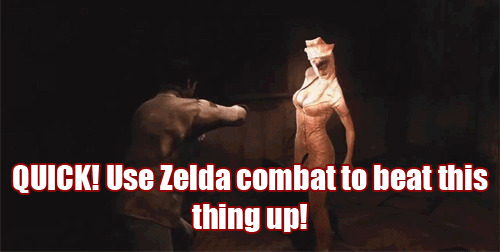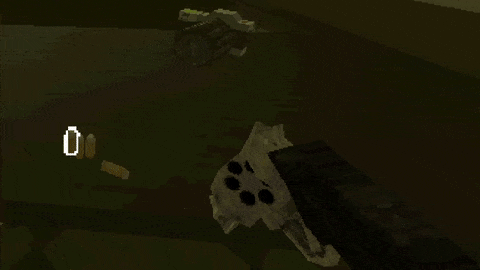#interact21
Explore tagged Tumblr posts
Text
A Game in the Making: Part VI
Following up from a couple of posts ago, discussing Hellblade: Senua’s Sacrifice, thinking about this game made me consider the tone of my own game a lot more. Hellblade has a dark fantastical feel, exploring psychosis; and thinking about Alex, when I picture it in my head it’s saturated with bright colours to showcase the Swinging Sixties, but also feels like a film noir. I suppose that makes it sound like a highly stylised and slick spy piece like Man From U.N.C.L.E or… Austin Powers? No. Not Austin Powers, but I'm sure you know what I mean. I hope.
Although I picture the game visually exuding 1960s pop culture, I still want that darker tone to it. After all, it does follow a woman experiencing trauma. Her husband is killed and she seems to be the next target. What she discovers further down the line in the game is traumatising in its own right for anyone, I would say. I think if i want to develop the game concept further I would need to find a balance in tone for sure. The Swinging Sixties was a revolution, it was politically charged but also culturally exciting and fun. Displaying that within the context of a dramatic story could be challenging because I still want this game to feel real, as if it was happening to a ‘modern’ woman, but I also want to immerse the player in sixties aesthetics and sensibilities. If it’s done right, I think this could gain traction amongst gamers in the same way that Mafia 2 did.
I still really love Mafia 2.
I know I also want to incorporate a choice the player has to make within the game that doesn’t change the ending of the game, but shifts the tone of Alex. It’s something I’ll go more into detail in the proposal.
All in all, thinking about different games for the blog has really helped shaped the tone I want for Alex so far.

#interact21#video games#gaming#senua's sacrifice#mafia 2#1960s#film noir#austin powers#man from uncle#nostalgia
188 notes
·
View notes
Text
Meet the party!





In my future Dungeons and Dragons inspired fantasy game for mobile, the player will join a party of adventurers! Since I have no artistic skills to speak of, I went to the Hero Forge website and created these miniatures so free. I would highly recommend creating a rough idea of what your characters look like before commissioning a design artist.
Meet Iris, a sarcastic, anti-social elf ranger, who is a hunter, rather than a beast master. She thrives in the snowy mountains of the North, as it is her favoured terrains and there’s little she doesn’t know about it.
Next, meet Remi, a rule-obeying human paladin who worships the deity Majere, god of meditation and order. Remi wears a copped spider on his shield as a symbol of his devotion.
Devin is a sneaky gnome rogue who is always looking for trouble. She’s clever and witty but hardly anyone would call her charismatic. She believed in two things only, good luck and good fortune.
Klaus is a magnetic red-skin tiefling bard. He plays the violin so beautifully he can sweet talk even the most stubborn of merchants into a deal. He’s clearly the most beautiful and charismatic of the group and knows it well.
Sweet little Milo, a halfling druid who stumbled into the group almost by accident is a wise and gentle soul. He makes friends with almost any person, animal or plant he encounters and always believes there is a clear path ahead.
#dnd#dungeons and dragons#fantasy#hero forge#miniatures#game development#mobile gaming market#fantasy game#interact21
16 notes
·
View notes
Text
Greg Thompson is the best Oblivion NPC
Almost fifteen years ago (come the 20th of March) The Elder Scrolls: Oblivion released. I missed it at the time - my first Elder Scrolls experience was shouting really loudly in people’s faces in Skyrim. Over the years, the awkward AI and voiceacting of the NPCs in Oblivion has become a bit of a meme. There’s a whole reason as to why they’re so awkward here, but the gist of it is Oblivion NPCs have weird conversations that sound oddly humourous.
I first became aware of the Oblivion NPC meme when my friend sent a live stream of a video simply called ‘Oblivion NPC Dialogue Live Stream�� from Whacked-Out Entertainment. Watching it I was completely confused as to what I was watching. The live stream was a series of short videos, showing a man in an American accent going about his day, talking to a camera man and making what seemed to be simple observations. The screen was mocked up to look like the HUD from Oblivion, including a section for the man/NPC’s name, which was Greg Thompson. I was still so confused. DId this man make these videos as a parody of Oblivion? They looked old. Was that deliberate?
I had to know.
Dipping into the vast realms of other ‘Oblivion NPC Memes’ I found a lot of mean spirited and seemingly exploitative videos where people with mental health conditions were filmed as passed off as an Oblivion NPC. It didn’t really sit right with me. So why did this new one work without feeling exploitative? Who is Greg Thompson?
Looking into it I discovered Greg Thompson is an English teacher from Texas, who in the late 80s and early 90s made his own educational show At Home with English which was broadcast on public access television. In the episodes, Mr Thompson teaches how grammer is used in every day conversation, displayed through his nosy camera man who won’t stop asking questions. Greg speaks clearly, distinctly and slowly, obviously to help aide his students, but as it turns out, a bit like a bad NPC.
The reason I’m writing about this is because I think it’s a good example of Convergence. This old media that was created to help non native English language speakers, has been repackaged if you will, into a form of (extremely niche) entertainment, that importantly for me, doesn’t feel mean spirited.
It’s not just me though. Greg Thompson’s NPC videos have been steadily uploading from late 2020 and checking the comments shows that fans are actively engaging with it and even creating, or asking questions of, the lore around Greg Thompson. I can see why. Each video seems to show different snapshots into the live of this version of Greg Thompson, who likes carpentry, riding his bike, swimming and sliding on floors since he was 3 years old.
Through his performance in the videos, Thompson, most likely unintentionally, creates a character who seems to have a wide eyes, innocent and wholesome outlook at the world. Other dramatic events in Greg’s life include him scandalously getting robbed “Why would someone rob me!?” he says, looking around his trashed living room, “I am not rich!”, getting stuck on a roof, standing up to an abusive boss and deliberating what to wear to that night’s party.
Perhaps it’s just the horrific world we currently live in, but I needed these. Greg lived rent free in my head over the next few days while I was still processing everything. Did he ever get his TV back? Did he find a new job? Why does the camera man (Mr Perfect) keep asking him all of these random questions? Why was he digging that massive hole, is he really a Necromancer?
More videos keep getting uploaded, most recently a trip to the supermarket where Greg puts too many things in his basket and struggles to carry them. The biggest question that kept me up at night was what was Greg Thompson doing now?
The most recent interview is here from 2009. Some people in the comments have recently asked for an update and I am pleased to say that according to those who did the interview in 2009, Mr. Thompson is still happily living in Texas, though may be unaware of his sudden internet fame. Thank God.
The live streams of edited videos broadcast every few days. Here’s one that’s currently live. This is the content we need right now.
youtube
#Interactive Media#interact21#converge#gaming#greg thompson#at home with English#oblivion#npc dialogue#wholesome#convergence
7 notes
·
View notes
Link
Tried this ARG this week and have become a little bit obsessed. It’s such a simple idea - you run whilst listening to audio of characters talking you through a story set in a world overrun by Zombies. You pick up supplies and medical kits based on the distance you run and at certain intervals have to up the pace to avoid the zombies. I’ve always been a podcast loyalist when it comes to running but this has them beat. Although it’s only audio you’re listening to, you feel completely immersed in the story and I felt a real need to speed up to avoid being eaten. I ran faster than I have in a long time and, due to the copious amount of lockdown induced cheese and wine I’ve consumed, I can only put the increase in speed down to the virtual zombies.
6 notes
·
View notes
Text
Dev Diary #8
Can’t believe I forgot about the existence of Eastshade.
Its one of the most stress-free games I’ve ever played. Even more so than Stardew Valley or any other farming sim.
It’s a game about a painter going to an island called Eastshade to paint key locations to fulfil the last wish of their mom. And the locations are absurdly beautiful. Everything is so calming and colourful and designed to be picturesque. It has to considering the main game mechanic is to paint. All you do is capture the scene you want and then the picture is painted onto a canvas on your easel. Simple.
The voice acting is a little off but considering this game was made by one guy and some volunteers I’d give it a pass. The soundtrack is seriously one of my favourite of all time.
This game defo has inspired the more relaxed, comfort zone, safe space sort of deal I want to go for for this project.
3 notes
·
View notes
Text
Testing user experience for accessibility
This week I’ve been thinking a lot about my project’s user experience, particularly with its accessibility focus.
In research, I found some great existing tool and tips for testing out some of the accessibility of apps.
Color Safe – lets you (or your design team) input your colour scheme and will guide you to an accessible colour combination/contrast ratio for users with different conditions.
VoiceOver – a screen reader app for iOS and Macs and;
TalkBack – the Android equivalent.
I also found guidance online about how to use these Screen Readers to test how your own app or project works them for the best user experience for those who will have these apps enabled.
Also, of great use from everyone and anyone, is getting in the habit of using Alt Text. These image descriptors (for those who can't see your images) can be used on everything from websites to making your social media posts more inclusive.
This article was a great resource with plenty of helpful tips to improve your image descriptions and your audience’s experience.
3 notes
·
View notes
Photo

I’m not sure if FOMO is the right phrase but it feels about right in relation to my general reaction to interactive media. Faced with a needless choice I get anxious and stroppy. Why would I choose to fumble in the dark or go down blind alleyways when I know someone has a bird’s eye view they’re not sharing? It’s for their amusement, their analytics. No thanks. Give me a site map. Let me be the judge of your structure. Let me make a free choice of whether I want to experience this path or that destination.
So why did I set all this aside for Bandersnatch, the interactive episode of Black Mirror? Because Charlie Brooker and Annabel Jones. I trust them. I watched it and enjoyed the experience at the time, but now I can barely remember anything about it. I just googled Bandersnatch site map. Ah the relief!
My then 18 year old hated Bandersnatch. It made him uncomfortable and he thought it was taking the piss. It was I think, I said. It didn’t help.
He introduced me to Detroit: Become Human. He worked the controller and I made the decisions, although it almost killed him not to override them. Everyone ended up singing. Best interactive experience ever!
4 notes
·
View notes
Link
Amazing to see this cultural hub of Berlin being brought to life through an interactive documentary. The Germans are at the forefront of remembering their history. There is so much potential for the same being done across UK cities...
3 notes
·
View notes
Text
The Product and the Platform
My intended platform for Return to Mirkmure is PC, with the hope of an eventual console port. I think Valve’s Steam service seems like a good starting point. While I am aware of certain drawbacks such as the $100 submission fee that is required and that Steam takes 30% of the royalties, it is also the most cemented market for PC gaming. There are also multiple games which fall under a similar genre bracket and have met with success on steam. (Examples at end of post)
The mechanics within the text adventure portion would be atypical of most text adventures. They will navigate the Mirkmure by a series of “rooms”, within which there will be either objects to examine or puzzles/actions to complete. Conversations with inhabitants of Mirkmure will be conducted through a multiple-choice system. The player will be given a list of possible responses with corresponding numbers, entering that number will designate the players response. Available actions as follows: Look, Read, Go to, Talk to, Use/Open
The mechanics within the first-person portions would likewise be kept simplistic. The player would control their character through “WASD” and mouse look. They will pick up documents which they can read and carry a cassette player on their person for listening to audio logs. When prompted they will be able to enter passcodes or interact with puzzles as need be.
The most significant idea I have discarded from the project is combat. I originally envisioned that there would be some lurking threat to the player which they would occasionally have to tackle/escape from. However, upon rethinking I remembered that combat in horror games is almost unanimously terrible and the implied threat is usually far more terrifying than combat. Further to this I also do not intend to include death/restart states for the player as I have always found this to be the ultimate fear killer.

Gameplay loop example:
Text Adventure – The player encounters a locked door they must find the password to open it and progress. There is one character they can talk to within the location. The conversation reveals a clue as to where the door code is hidden and also forces the player to answer a question, such as “Which is more unnerving, basement or attic?” The player follows up on the clue but the series of numbers they get are clearly for a radio frequency and do not fit the door code.
1st Person Exploration – The player is forced to stop playing the text adventure. A radio blasting static can be heard from either the basement or attic; depending on the players choice in conversation. The player will have to then go to the radio and input the frequency they received in the text adventure whereupon the radio will speak the code for the door in the text adventure.
The Audience
The audience for this title should encapsulate a range of horror genre fans aging 18 – 45. I believe that the retro aesthetic, setting and mechanics of the game will help to ensure interest from the older side of the audience. Whilst the rise of cult/Lovecraftian horror popularity in both film and gaming should attract the attention of horror newcomers.
Furthermore, despite the aggravation the “walking simulator” genre has received it is also clear that there is a large market for short, narrative focused games. The best of these, such as What Remains of Edith Finch, have learned to lean into their medium and increase the interactivity so that the players actions are varied and integral to the story.

(Above: Paratopic provides the coolest reload animation I have ever seen. More details like this and less detailed walking. Looking at you Dear Esther.)
The Market and Pricing Estimates
The average price of my competition is £5-£10. Pricing Return to Mirkmure would be finalised after the pre development stage is finished and the rough length, number of mechanics and player interactions would be known. I decided upon this as it seems like this is the determining factor, or certainly reflective of, how games fitting this bracket are priced.
Examples:
Anatomy by KittyHorrorShow – $2.99/£2.14. Player interaction very limited, (walking and audiotapes.) Games lasts about 30 min. Single ending, little replay value.
Paratopic – £4.79. There are several interactions for the player to do in this, all kept brief but high quality. (Driving, camera, single instance of “combat.”) Game lasts about 40-50 min. Only one ending but begs at least one replay.
Helltown - £5.79. Simple mechanics but a lot for the player to figure out. Variety of different scenarios/areas requiring different interactions from the player. Game lasts about 2 hours, features multiple endings, good replay value.
Stories Untold - £6.99. The only game on the list with fully modern graphics. However, it is also the only game where the player is kept mostly static and unable to move. Features a new in-depth mechanic each episode. Game lasts about 3 hours. One ending, some replay value.
2 notes
·
View notes
Text
A Comforting Game
Since returning home to attend a hospital appointment, I’ve been able to sift through all my old games for the Nintendo Wii, DS, GameCube, and Game Boy. I’m pathetically nostalgic, so i’ve kept them all. There is one game in particular though that I always come back to and it’s a game I have for both the DS and Wii. It’s a game that, like The Sims, I could spend hours on. It’s engaging, relaxing, and dare I say picturesque. Most importantly though, I find it to be a comforting game- probably since it makes me feel like a kid again. That game is Animal Crossing.
For the DS, I have Wild World: the second instalment in the franchise to be released. The thing with Animal Crossing is that you are part of a community, interacting with your neighbours, taking part in seasonal celebrations, as well as regular day-to-day stuff in the game like fishing, catching bugs, finding fossils. A big part of the game is also to pay off your mortgage to get a bigger house, which you can decorate. All this provides focus, but it’s still calming, and charming, as you can probably sense from the pictures below. The Wii game I have is Animal Crossing: Let's Go to The City (also called City Folk), which is essentially the same but as the name suggests, with the added feature of visiting the ‘city’ consisting of a few shops.
I think what’s great about the game and why you can keep going back to it (even the older versions) is because you do get a sense of achievement out of it. It’s not a game to ‘complete’ but you still work towards things. Paying off your mortgage, buying certain furniture collections, catching rare fish, etc. You can set yourself these goals, but with no consequences. It doesn’t matter how long, or if you even manage to catch all the rare fish because obviously, it’s just a game; and it’s a game that’s there purely for your enjoyment, and comfort more than anything. In this sense, I would certainly call it an escapist game; and with deadlines fast approaching, it’s been hard to resist getting a Nintendo Switch purely for Animal Crossing: New Horizons...


#interact21#gaming#video games#nintendo#wii#nintendo wii#nintendo ds#animal crossing#wild world#animal crossing city folk#new horizons#gamecube#gameboy#comfort#nostalgia
11 notes
·
View notes
Text
CONSCIOUS ambassadors
As mentioned previously, for the business plan I intend to incorporate the use of ambassadors as promotion for my app. I want to have at least few options to choose from; from the cheaper side to the more expensive. These ambassadors need to have an established social media presence, similar target audience to CONSCIOUS and interest in second hand shopping and sustainability.
For my first option, I want to look at Leena Norms who is a YouTuber and a content creator. Even though Leena is primarily a book-focused channel she also has a series of videos titled 'A Guide to Positive Panic' where she discusses environmental issues.

My second option is Jack Edwards. He is also a booktuber with a significant following, but as a London-based creator he posts a lot of vlogs and thrift shopping videos which seem to be very popular with his fans, mostly young female demographic.

The third and last choice so far is Ashley from Bestdressed. She is an established YouTuber with over 3.75M subscribers. Her main focus is on thrifting and second-hand shopping. She is politically engaged and speaks up a lot about a possible sustainable fashion future. She would be the ideal choice since she has the widest reach out of these three content creators.

For my proposal I will be researching the specific numbers needed to tell how much a sponsored video would cost for each of these channels and determine if that is in any way viable. Since it is the primary choice of a business plan, I feel like investing into sponsored videos, especially considering the CONSCIOUS target audience, would be for the best.
#business plan#conscious#consciousapp#app development#interact21#ambassadors#influencers#bestdressed#jackedwards#leenanorms#thrifting#thrifting culture#second hand shopping
4 notes
·
View notes
Text
How the Dreamcast (RIP) got me into Resident Evil
During the course induction I described myself as a fan of the Resident Evil games. This is true, but it wasn’t always. As a 90s child I was obsessed with Dinosaurs, monsters and even the Xenomorph after borrowing my uncles VHS copy of Aliens. Zombies would seem like a natural progression. Yet when my friend showed me a PS1 magazine with a feature on the upcoming Resident Evil 2 complete with gameplay screenshots I looked on and said ‘Big woop, zombies.’
I had never watched any zombie films at this point. My main exposure had been Bart resurrecting the Dead in The Simpsons, which I had enjoyed, but they seemed more goofy than scary. Ironically, one of my favourite PS1 games that I still have after all these years is Dino Crisis. I loved that game, and a sticker on the box proudly proclaimed the game to be ‘From the creators of the Resident Evil Series’. I still didn’t make the connection. Still wasn’t interested.
It wasn’t until I was 12 that I was at a different friend’s house who was showing me his new Dreamcast. Lured by the fact that he also had Dino Crisis on this system, I was rather disappointed when he said he wanted to play Resident Evil 2 instead. Fine, I thought, I’ll see what it’s about.
Skipping over the recap cutscene, which I actually wanted to watch, we sat back and watched as Leon S Kennedy started his first night day as a member of the Raccoon City Police Department. The opening FMV changed everything. Here zombies were scary, like really scary for my 12 year old brain. We both watched in awe as the RPD car skidded around the corner, remarking to each other how it looked like a real film.
Soon enough it was time to play, and by god we were awful. Poor Leon never even made it to the RPD that night with us in control, devoured instead by a crawling zombie in a bus.
I realised I loved this. Why hadn’t I played it before? It was like Dino Crisis, but with zombies! I quickly snapped up all the Resident Evil games I could on the playstation. When I couldn’t get the game, I read the novelisations. And the movie had just come out. The series quickly became my biggest obsession, a gateway drug into the harder susbstances like Romero. Zombies were the enemy I never knew I loved, the survival plan I never knew I needed.
From 4 onwards I’ve made sure to get them at launch. I try to be above the need to be first as an adult, but those games still get me so much that I paid full price on Amazon for the RE3 remake last year just to play it at launch. And yes, I’ll be getting RE8 in May, ps5 or no ps5. This interactive media has a hold of me.
And yet, if it hadn’t been for my friend’s Dreamcast back in 2001, it may never have happened. Goodbye little doomed console, rest in peace.
6 notes
·
View notes
Text
A visual novel interesting to look at for inspiration - The Wayhaven Chronicles
I heard about The Wayhaven Chronicles in passing online as a very long (over 400k words) interactive novel in which the player takes the role of a detective in a small town in which there is a spike of supernatural activity. It’s a fantasy-romance story which is not exactly the genre that I am going for in my game, but nevertheless it includes mystery elements.
The sheer length of it put me off from trying it until now, but I changed my mind while developing Duchess - it could be interesting to look at it for development purposes.
I am going to play through a part of Book One of the series this week (I don’t think I have the time to play through the whole game) and take notes on the story structure, characters, plot elements, and choices. I want to figure out what works and what doesn’t in an existing game of a similar genre (interactive fiction vs. visual novel) and apply my findings as I develop my project.
I think The Wayhaven Chronicles could be a useful comp title in my project proposal. I am also thinking about exploring titles developed in ChoiceScript (developed by Choice of Games), because while they don’t include the visual aspect, I can still learn a lot about how to create a compelling branching narrative from them.
2 notes
·
View notes
Text
I can’t remember my first interactive experience. Maybe Choose Your Adventure stories from the 80’s - both in print and on a juddering IBM. I wasted a lot of hours with Sonic on a Gameboy circa 1993. Much more recently (December 2020) I was blown away by the Ray Harryhausen exhibition at the National Gallery of Scotland.
The exhibition’s purpose was to celebrate 100 years of the artist, showcase his puppets, contextualise his work in its era, and recognise how he influenced stop-frame animation. Ferocious skeletons and towering cyclops are a childhood mainstay of mine, when there were 4 channels on the telly and their Saturday afternoon schedules were always films like The 7th Voyage of Sinbad and Clash of the Titans. So, I was excited to see his work on display as I write for and have an interest in animation, but was surprised when it was the interactive elements that bowled me over.
In one spot multiple screens hung, inviting visitors to step in and be transported to a 50’s set to see how these early animated films were layered, and the order of a shoot. Elsewhere, Playdead, a Glaswegian company adept at all things animated, had designed a narrative played out by a few iconic Harryhausen characters projected onto exhibit slabs between which the story moved. It was a touch of magic, the kind of magic that animation always brings to the table. Or slab. A final stop on a green screen set with sword-wielding skeletons and a dragon in a Sinbad-style ruined city topped off the physical exhibition, but another thread, perhaps under-marketed, was a series of online workshops in conjunction with Aardman Animation. The Aardman facilitators discussed how Harryhausen pushed the limits of his field, which techniques remain unchanged, and how a stop motion animation set works, reinforcing what had been communicated in text at the Gallery as well as teaching us how to make a Gromit and Shaun the Sheep.
It’s a real treat seeing behind the scenes of pioneering films that influenced the likes of Star Wars, Jurassic Park, and Aardman (all themselves pioneers in my opinion) and it was fun, light-hearted, surprising, and genuinely educational. I’m a big fan of learning for all, and believe that museums and galleries can be at the heart of it if all exhibitions were as engaging and broadly appealing as this. So, in a way, Ray Harryhausen is still pioneering, 100 years later.
5 notes
·
View notes
Text
Notes on Blindness VR
A few years ago, when I was still doing my Bachelor’s in Animation, there was a showcase for VR featuring stories rather than just games. My teacher took us to the show and we got to experience a few of these as well as attend the panel that talked about the development, purpose, and intent behind the project.
There were two that really stood out to me. It was called Notes on Blindness. It’s an interactive VR-project based on the audio diaries of the writer John Hull who slowly lost his eyesight before becoming completely blind in 1983.
While wearing the headset, you get to listen to him talk about his life during the times he was slowly losing the ability to see. He’d focus on the actions around him and the sounds he could hear. The world you see is pitch black with flecks of blue light outlining objects around you. The objects that are outlined are moving which is why you can see them.
There was one moment that stood out to me the most and that was when it started to rain. All around me the world came alive. A wave of blue would wash over everything every time you could hear lightening. Raindrops illuminated objects every time they touched.
It was a bittersweet experience. I remember that I left feeling sad and happy because this man got to focus on all the little things before he couldn’t anymore, but he was still going to be blind by the end. I sympathised with him.
https://www.youtube.com/watch?v=9ViF0GBt6fQ&ab_channel=Curzon
3 notes
·
View notes
Text
DYK, Together Everyone Achieves More?
Phil’s sessions highlighted how it’s important to be able to articulate your idea as clearly and concisely as possible.
Projects (of all shapes, sizes and industries) are the effort of different disciplines pulling together.

Alt text: Moira Rose (Schitt's Creek) quote "If that isn't teamwork, I don't know what is."
Applying it to my own project (although not a game), I’m starting to think about how I would best explain it to the team of different skillsets who'd hypothetically develop it?
So, the idea is an app which allows users to opt-in to making our communities more accessible.
The interactive project would consist of two key parts.
Part 1
A location-based app allowing disabled people to easily capture and communicate accessibility issues as they experience them.
This would need collaboration with local authorities and businesses etc alike to ensure experiences are logged and acted on. However, I’m confident that a streamlined way of making communities more accessible would be welcomed.
I found a great example of a similar app (used for reporting issues to local authorities) in New Zealand and Australia – I like its simplicity and focus on community building.
Part 2
A series of content led by disabled creators and voices to raise awareness, launch and promote the project.
Inspired by Phil’s narrative design prompt based around a room, I thought it could be interesting to focus on a single room/sense of place but show how differently it appears (and is experienced) to people with different disabilities and conditions.
Content could exist in a wide variety of forms (giving people the freedom to articulate their experiences in the way that works best for them and share this with others).
I feel these two parts would then provide something for disabled and non-disabled users and encourage real, community-driven change.
Go Teamwork!
2 notes
·
View notes